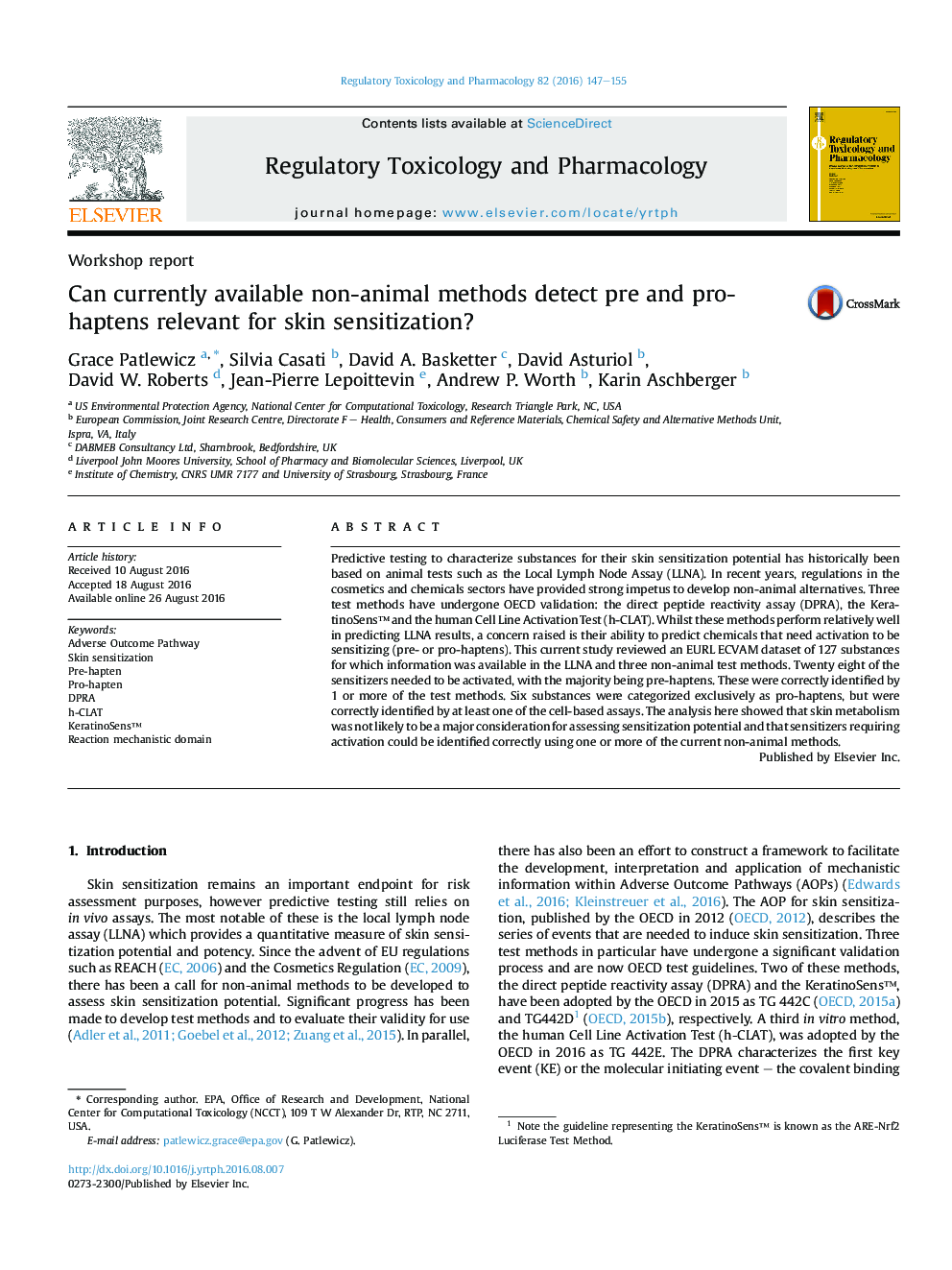| کد مقاله | کد نشریه | سال انتشار | مقاله انگلیسی | نسخه تمام متن |
|---|---|---|---|---|
| 5561308 | 1562121 | 2016 | 9 صفحه PDF | دانلود رایگان |

- The three most established non-animal test methods for skin sensitization are the DPRA, the KeratinoSens⢠and the h-CLAT.
- A dataset of 127 substances for which outcomes were available in all three non-animal tests and the LLNA was collected.
- 28 substances required activation to be sensitizing and were correctly identified by 1 or more of the test methods.
- Six substances were categorized as pro-haptens exclusively but were still correctly identified by a cell based assay.
- Skin metabolism was not a major consideration for assessing skin sensitization potential in this dataset.
Predictive testing to characterize substances for their skin sensitization potential has historically been based on animal tests such as the Local Lymph Node Assay (LLNA). In recent years, regulations in the cosmetics and chemicals sectors have provided strong impetus to develop non-animal alternatives. Three test methods have undergone OECD validation: the direct peptide reactivity assay (DPRA), the KeratinoSens⢠and the human Cell Line Activation Test (h-CLAT). Whilst these methods perform relatively well in predicting LLNA results, a concern raised is their ability to predict chemicals that need activation to be sensitizing (pre- or pro-haptens). This current study reviewed an EURL ECVAM dataset of 127 substances for which information was available in the LLNA and three non-animal test methods. Twenty eight of the sensitizers needed to be activated, with the majority being pre-haptens. These were correctly identified by 1 or more of the test methods. Six substances were categorized exclusively as pro-haptens, but were correctly identified by at least one of the cell-based assays. The analysis here showed that skin metabolism was not likely to be a major consideration for assessing sensitization potential and that sensitizers requiring activation could be identified correctly using one or more of the current non-animal methods.
Journal: Regulatory Toxicology and Pharmacology - Volume 82, December 2016, Pages 147-155